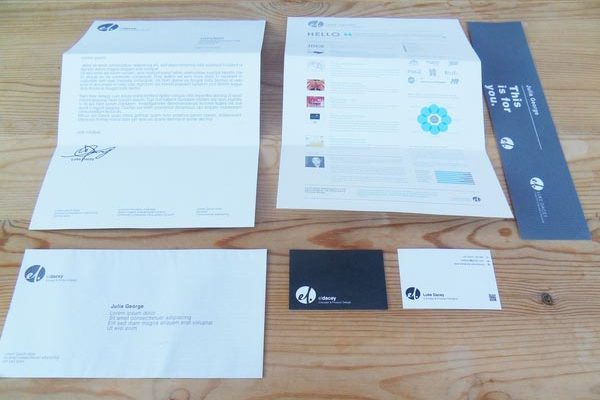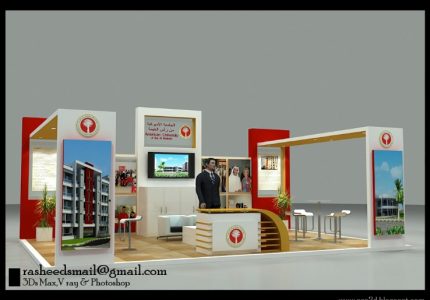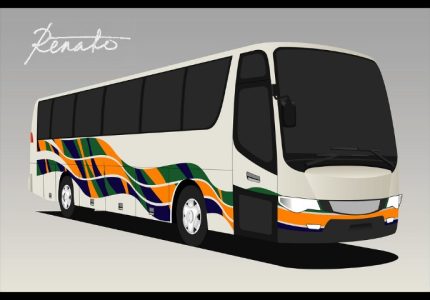Overview of a Graphic Design Career
Embarking on a career in graphic design offers a dynamic and creative pathway for individuals passionate about visual communication. This field combines artistry with technology to craft compelling visuals for a variety of media, including print, digital, and advertising. With opportunities to work in diverse industries such as marketing, entertainment, and technology, a graphic design career provides both artistic fulfillment and professional growth.
Definition and Scope
Graphic design as a career involves creating visual content to communicate messages effectively across various media. It combines creativity, technology, and communication skills to produce designs for print, digital, advertising, branding, and more. This field offers diverse opportunities for artists, marketers, and storytellers to express ideas visually and solve problems creatively.
- Definition of Graphic Design: The art and practice of planning and projecting visual communications using typography, imagery, color, and layout.
- Scope of a Graphic Design Career:
- Advertising and Marketing
- Branding and Logo Design
- Web and Mobile Interface Design
- Print Media (Brochures, Magazines, Posters)
- Motion Graphics and Animation
- Packaging Design
Key Roles and Responsibilities
A career in graphic design offers a dynamic and creative professional pathway where individuals use visual communication to convey ideas, promote products, and enhance brand identity. This field combines art and technology to produce engaging visual content tailored to various media platforms.
Key roles in graphic design include creating visual concepts, developing layouts, and designing graphics for print and digital media. Graphic designers collaborate with clients and team members to understand project requirements and deliver designs that meet specific goals. They utilize software such as Adobe Photoshop, Illustrator, and InDesign to bring their ideas to life.
The responsibilities of a graphic designer encompass brainstorming innovative concepts, producing original artwork, ensuring visual consistency across projects, and adhering to deadlines. They also stay updated on design trends and technological advancements to maintain relevance and deliver effective visual solutions.
Overall, a career in graphic design involves combining creativity, technical skills, and strategic thinking to craft compelling visual messages that resonate with audiences and support clients’ objectives.
Industries Employing Graphic Designers
A career in graphic design offers a dynamic and creative professional path for individuals passionate about visual communication. Graphic designers develop visual concepts to convey ideas, inform, and captivate audiences through various digital and print media. This field combines artistic skills with technical expertise, allowing designers to work on branding, advertising, web design, packaging, and multimedia projects.
Various industries employ graphic designers to enhance their branding and marketing efforts. Advertising agencies rely on graphic designers to create compelling campaigns, while publishing companies use their skills for book covers, magazines, and editorial layouts. Technology firms and startups often need designers for website development and app interfaces. Additionally, the entertainment industry employs graphic artists for video games, movies, and promotional material, and corporations hire them for internal and external communications. With versatility and creativity at its core, a career in graphic design offers numerous opportunities across diverse sectors.
Educational and Skill Requirements
Embarking on a career in graphic design requires a solid foundation of educational and skill-based requirements. Aspiring designers typically pursue relevant formal education to develop technical knowledge and creative skills. In addition, possessing a strong portfolio, proficiency in design software, and an eye for detail are essential for success in this competitive field.
Formal Education and Certifications
Effective graphic design as a career typically requires a strong foundation in both educational background and professional certifications. Candidates often pursue formal education in fields such as graphic design, visual arts, or communication design to gain essential skills and techniques. A bachelor’s degree is usually preferred by employers, providing comprehensive knowledge of design principles, software proficiency, and creative strategies.
In addition to formal education, obtaining certifications can enhance a designer’s credentials and demonstrate specialized expertise. Certifications from recognized organizations, such as Adobe Certified Expert or Certified Graphic Designer, validate proficiency in industry-standard software and practices. Continual learning through workshops, online courses, and professional development programs is also highly valued, as the field of graphic design continuously evolves with new tools and trends.
Essential Skills and Competencies
Embarking on a career in graphic design requires a combination of educational qualifications, technical skills, and creative competencies. A formal education such as a degree or diploma in graphic design, visual arts, or a related field provides a strong foundation in design principles, typography, color theory, and digital tools. Practical experience gained through internships or freelance projects enhances a designer’s portfolio and industry understanding.
Essential skills for graphic designers include proficiency in design software like Adobe Creative Suite (Photoshop, Illustrator, InDesign), strong visual communication abilities, and an understanding of branding and marketing strategies. Good time management and the ability to work under deadlines are also crucial in delivering high-quality work consistently.
Key competencies for success in this field encompass creativity, attention to detail, adaptability to new technologies, and excellent communication skills to interpret client needs and collaborate effectively. A good graphic designer must remain open to feedback, stay updated with industry trends, and continuously develop their skills to stay competitive in a dynamic and evolving profession.
Technical Knowledge and Software Proficiency
Embarking on a career in graphic design requires a combination of educational background, technical skills, and proficiency in various software tools. A solid foundation in design principles and related skills is essential to succeed in this dynamic field.
- Educational and Skill Requirements:
- Formal education such as a degree or diploma in graphic design, visual arts, or a related field
- Strong creativity and conceptual thinking abilities
- Good communication and collaboration skills
- Attention to detail and time management skills
- Technical Knowledge:
- Understanding of color theory, typography, layout, and composition
- Knowledge of branding and marketing principles
- Familiarity with current design trends and industry standards
- Software Proficiency:
- Expertise in Adobe Creative Suite, including Photoshop, Illustrator, and InDesign
- Experience with vector graphics and image editing software
- Basic knowledge of web design tools and platforms such as Adobe XD, Figma, or Sketch
- Understanding of file formats, resolution, and printing specifications
Specializations within Graphic Design
Graphic design is a dynamic and diverse field that offers numerous specialization options for creative professionals. Each specialization allows designers to focus on specific aspects of visual communication, tailoring their skills to particular industries and projects. From branding and illustration to web design and motion graphics, these specializations help designers hone their expertise and build versatile careers in the evolving landscape of visual arts.
Branding and Identity Design
Specializations within graphic design, branding, and identity design offer diverse opportunities for creative professionals to focus on areas that align with their skills and interests. Graphic design encompasses areas such as print design, digital design, and user interface design, each requiring different techniques and tools. Branding and identity design focus on creating visual identities that represent a company’s values and personality, including logo development, color schemes, and typography. Other niche fields include package design, which involves designing product packaging that appeals to consumers, and motion graphics, which bring static visuals to life through animation. Additionally, some designers specialize in environmental graphics, creating visual experiences for physical spaces like buildings or events. These specializations allow graphic designers to develop expertise in specific areas, making them more versatile and valuable in the competitive creative industry.
Print and Publishing Design
Specializations within graphic design, particularly in print and publishing design, allow professionals to focus on specific areas of creative expertise. Print design encompasses developing visual content for printed materials such as brochures, posters, packaging, and books, emphasizing layout, typography, and color harmony to communicate messages effectively. Publishing design, on the other hand, involves designing layouts for newspapers, magazines, and digital publications, requiring a deep understanding of readability, branding consistency, and multimedia integration. These specializations enable graphic designers to hone their skills in particular mediums, creating impactful visual communication tailored to their target audiences.
Web and Digital Design
Graphic design as a career offers a diverse range of specializations within the fields of graphic design, web, and digital design. Each specialization focuses on different aspects of visual communication and digital technology, allowing designers to develop expertise in specific areas. These include branding and identity design, which involves creating visual identities for companies; print design, focusing on materials like brochures, posters, and packaging; and user interface (UI) design, which emphasizes crafting engaging and intuitive digital interfaces. Web design encompasses the creation of website layouts, responsive designs, and interactive elements to enhance user experience. Digital design also covers motion graphics, animation, and multimedia content tailored for digital platforms. Overall, this variety enables aspiring designers to find their niche and develop specialized skills suited to their interests and career goals.
Motion Graphics and Animation
Specializations within graphic design, motion graphics, and animation offer a diverse range of career paths for creative professionals. Graphic design encompasses areas such as branding, typography, layout design, and visual identity, allowing designers to craft compelling visual communication for various media. Motion graphics focus on animated visuals used in television, film, advertising, and digital platforms, requiring expertise in animation techniques and software. Animation as a broader field includes 2D and 3D character animation, visual effects, and storytelling through movement, providing opportunities in entertainment, gaming, and educational content. Each specialization allows designers to develop unique skills and pursue niche markets, making graphic design a versatile and dynamic career choice.
Work Environment and Job Settings
Work environment and job settings play a vital role in shaping the experience and productivity of graphic designers. Whether working in a bustling studio, a quiet freelance space, or remotely from home, designers encounter diverse environments that influence their creativity and workflow. Understanding these settings helps aspiring professionals choose the right career path and adapt to various work conditions in the dynamic field of graphic design.
In-House Design Teams
Working within an in-house design team offers a dynamic and collaborative environment for graphic designers. These teams are typically situated within a company’s premises, allowing designers to closely align their creative efforts with the organization’s goals and branding strategies. The work setting encourages frequent communication and feedback, fostering a sense of community and shared purpose. In-house designers often experience a more stable routine and consistent workflow compared to freelance or agency work, enabling deeper engagement with ongoing projects. This environment can also provide opportunities for professional growth through direct mentorship and exposure to various aspects of the company’s operations.
Design Agencies and Studios
Working in a design agency or studio offers a dynamic and collaborative environment for graphic designers. These settings often foster creativity through exposure to diverse projects, clients, and team members. The energetic atmosphere encourages innovative thinking and continuous learning, making it an ideal space for those passionate about visual communication.
Design agencies typically have a fast-paced workflow with multiple projects running concurrently, requiring strong time management and adaptability. Studios, on the other hand, may focus more on specialized services or artistic pursuits, allowing for deeper exploration of design concepts. Both environments provide opportunities for networking, professional growth, and development of a versatile skill set.
Overall, choosing between agency and studio work depends on personal preferences and career goals. While agencies tend to offer broader exposure and varied experiences, studios often provide a more focused and creative workspace. Regardless of the setting, a passion for design, teamwork, and a commitment to quality are essential for success in this vibrant field.
Freelance and Independent Practice
Graphic design as a career offers a diverse range of work environments and job settings, from traditional office spaces to remote freelance projects. Many designers work in creative agencies, corporate in-house departments, or design studios, where collaboration and structured workflows are common. Others enjoy the flexibility of freelance and independent practice, allowing them to choose their clients and projects, manage their schedules, and work from virtually anywhere. This variety enables graphic designers to tailor their work environment to best suit their creative process and personal preferences, fostering innovation and productivity. Whether working in a team or independently, adaptability and strong communication skills are essential to success in the dynamic field of graphic design.
Career Development and Advancement
Career development and advancement in graphic design involve continuously honing creative skills, staying updated with industry trends, and building a strong portfolio. Professional growth in this field requires both technical expertise and strategic networking to seize new opportunities. Aspiring graphic designers can achieve their goals by gaining experience, embracing innovation, and pursuing ongoing education.

Building a Portfolio
Building a successful career in graphic design requires continuous development and strategic portfolio building to showcase your skills and creativity. A well-curated portfolio serves as a visual resume that demonstrates your range, style, and technical expertise to potential employers or clients.
To advance in graphic design, focus on gaining diverse experiences by working on various projects, whether freelance, internships, or personal initiatives. This not only enhances your skills but also enriches your portfolio with a broad spectrum of work, reflecting your versatility.
Invest in honing your craft by staying updated with the latest design tools, trends, and techniques. Attend workshops, online courses, and industry events to expand your knowledge and network with professionals in the field.
When building your portfolio, include original projects, collaborations, and case studies that illustrate your problem-solving abilities and creative process. Tailor your portfolio to the type of work or clients you aspire to attract, highlighting your strongest and most relevant pieces.
Continuously update your portfolio as you accumulate new work and skills, demonstrating growth and a commitment to your craft. A well-maintained portfolio is crucial for career development, opening doors to new opportunities, higher-level positions, and freelance ventures in the competitive world of graphic design.
Networking and Industry Connections
Career development and advancement in graphic design require continuous skill enhancement and a proactive approach to industry opportunities. Staying current with design trends, software updates, and emerging technologies helps designers remain competitive and innovative. Building a strong portfolio and seeking feedback from peers contribute significantly to professional growth. Networking plays a crucial role in opening doors to new projects, collaborations, and job prospects, allowing designers to gain visibility within the industry. Establishing industry connections through conferences, online forums, and social media platforms can lead to mentorship opportunities and partnerships that fuel career progression in this dynamic field.
Career Progression and Leadership Roles
Career development and advancement in graphic design involve continuously honing artistic skills, staying updated with industry trends, and expanding one’s portfolio to showcase versatility. Progression can lead to roles such as senior designer, art director, or creative director, offering increased responsibility and influence over project outcomes. Achieving leadership roles requires not only technical expertise but also strong communication, project management, and teamwork abilities. As graphic designers ascend in their careers, they often take on mentoring responsibilities, lead creative teams, and contribute to strategic decision-making, ensuring they remain competitive and fulfilled in the dynamic field of design.
Challenges and Opportunities in Graphic Design
Graphic design as a career offers a dynamic blend of creativity and technical skills, opening doors to diverse opportunities in various industries. However, it also presents unique challenges such as staying updated with rapidly evolving technology, meeting client expectations, and standing out in a competitive market. Despite these hurdles, the field continues to grow, providing talented designers with numerous avenues to innovate and succeed.
Staying Current with Trends
Graphic design as a career offers numerous opportunities for creative expression and professional growth, but it also presents certain challenges in staying relevant in a rapidly evolving industry. One of the main challenges is keeping up with constantly changing design trends and technological advancements, which requires continuous learning and adaptability. Staying current with trends is essential for designers to maintain their relevance and meet client expectations, but it can be demanding given the fast pace of the industry. On the other hand, these challenges also open up opportunities for talented designers to differentiate themselves by mastering new tools, exploring innovative styles, and expanding their skill set. Embracing emerging technologies such as augmented reality, motion graphics, and UI/UX design can lead to new avenues for career development. Overall, the dynamic nature of graphic design ensures both challenges and opportunities for growth, making it a stimulating and rewarding career path for those willing to evolve continuously.
Creative Independence and Client Management
Graphic design as a career offers a dynamic balance between creative independence and client management, presenting both unique challenges and exciting opportunities. Freelance designers often enjoy the freedom to pursue their artistic vision, fostering innovation and personal expression. However, managing client expectations, deadlines, and budgets can be demanding, requiring strong communication skills and professionalism. The rapidly evolving technology landscape provides endless opportunities for learning new tools and expanding one’s skill set, thereby enhancing marketability and creative potential. Conversely, staying current with industry trends and maintaining a consistent flow of projects can be challenging, especially for emerging designers. Overall, navigating these aspects thoughtfully can lead to a fulfilling career marked by continuous growth, originality, and meaningful client collaborations.
Digital Transformation and New Technologies
Graphic design as a career is continually evolving, presenting both significant challenges and exciting opportunities due to digital transformation and emerging technologies. The rapid pace of technological advancements requires designers to stay current with new tools, software, and trends, often demanding ongoing learning and adaptability. However, these developments also open avenues for innovative creative expression, allowing designers to push boundaries and reach global audiences more easily than ever before.
Digital transformation has revolutionized how graphic designers collaborate and deliver their work, fostering remote work environments and new platforms for client interaction. Yet, it also introduces challenges such as increased competition and the need for constantly updating technical skills. Additionally, the proliferation of new technologies like augmented reality, virtual reality, and artificial intelligence offers novel ways to create immersive experiences, promising a bright future for those willing to embrace these tools.
Overall, the intersection of challenging landscapes and emerging opportunities makes graphic design a dynamic and rewarding profession. Success in this field depends on a designer’s ability to adapt to technological changes, leverage new opportunities creatively, and continuously hone their skills to stand out in a competitive market.





